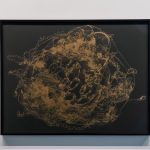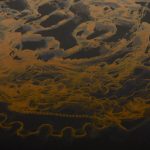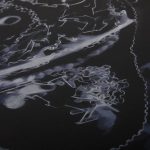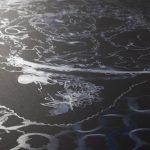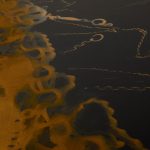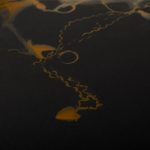The thing is, we are stardust. Everything is. The first stars (long since gone) were made almost solely of hydrogen. They were behemoths: the lightest element was their primary ingredient, so in order to become stars, they needed enormous expanses of hydrogen to gather enough mass for gravity to spark the fusion of elements at their core. Once ignited, the radiating pressure of nuclear fusion steadied the compressing force of gravity. But over time as heavier and heavier elements formed at the center of stars, gravity eventually tipped the scales, collapsing the cores. The first generation of stars died, and even heavier elements were created from their energetic demise. New stars formed from the exploded remains of those stars, and those second-generation stars in turn seeded the third-generation stars that now populate the spiral arms of our Milky Way—stars like our Sun, rich in metals, formed from the dust of stars past. Many of heaviest elements today, out beyond iron, were made not just by exploded stars but from the resounding collision of two neutron stars (the collapsed core remnants of some exploded stars). These are the origins of gold and silver.
This slow process—this re-generation—links one thing to another. In making my drawings, I wanted to devise a scheme that echoed this complexity. I gathered chain necklaces—some worn often, some nearly forgotten—and placed them on sun-sensitive paper to make cyanotypes. I attempted (as best I could, with try after try, and never truly achievable) to arrange the tangle of jewelry into forms reminiscent of various cosmic phenomena: a planetary nebula shedding layers of gas and dust with a hot, dense white dwarf star left at its center; or a supernova, the exploded remains of a collapsed star; or the center of our Milky Way galaxy exposed in radio waves, showing filaments of accelerated particles redirected light years through space. As I made these cyanotypes (a photographic process that uses sunlight as a catalyst to make a blueprint-like image), I thought about the distance light traveled to reach these gold and silver pieces of metal before casting their shallow shadows on the paper. Elements in direct contact with the sun-sensitive paper completely obstructed the sunlight, producing crisp, bright-white shapes. But where the jewelry lifted up, even slightly, sunlight leaked around to work into the chemistry of the paper, and diffuse blue-white shadows formed. If part of an object in the arrangement came to rest high enough away from the photosensitive paper, it simply failed to register, slipping fully into the blue of the blueprint background.
I then transferred these patterns of touchpoints and slippages onto black paper by projecting a scan of each cyanotype. I marked the points of contact (where gold and silver met paper) and indicated where the points of contact began to blur. In making these marks, I inverted each sun print’s negative image of absence into a positive image of form. With my sketched outlines as a beginning, I worked back into each drawing. For my drawings referencing gold jewelry, I used metallic gold pencil to delineate points of contact, metallic bronze to indicate where the jewelry first lifted from the paper, and for the broader cast shadows, a warm, dark gray that drifts towards the black background of the paper. For Remnant (Silver), silver metallic pencil blends into a warm gray, and then on towards black.
This step-by-step process is deliberately elaborate. It tells a story of becoming, yet each step makes the preceding steps recede. A chain of connection is present, but there is also a sense of slipping away. Tangible, yet shimmery. The way our loved ones are always with us, and always separate.
How nearly unfathomable it is that some of the gold represented in these drawings, which has lain against skin, came from the collision of two neutron stars. Some of this jewelry only pretends to be gold and silver—but metal alloys, too, have cosmic origins. These pieces of jewelry were gathered from hiding places, forgotten places, favorite places. They were taken from necks and wrists and borrowed from friends. These elements were worn on special occasions, or worn during a certain chapter of life, associated with a memory. A necklace might simply act as reminder of someone, the bestower of a gift. These elements are a connection to others. Here, in my drawings, they indicate the connection to all things. These elements came from cosmic events so far from our reality, so physically distant—and yet, here they are; here we are.










